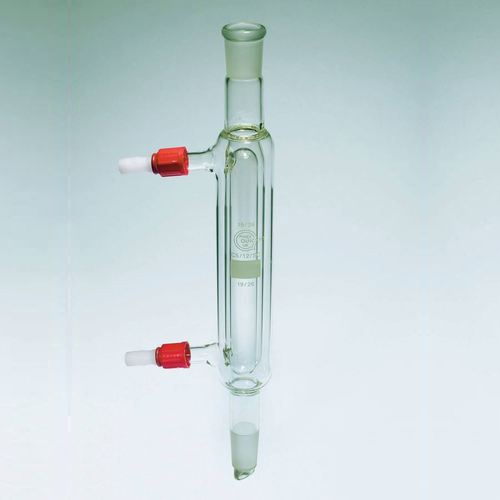Introduction
Double surface condenser is a specialized type of heat exchanger that utilizes two separate condensing surfaces to enhance heat transfer efficiency. It is widely used in industrial processes where efficient condensation of steam or vapors is required, such as in power plants, refrigeration systems, chemical industries, and HVAC applications. Unlike conventional single-surface condensers, which rely on a single heat exchange area, double surface condensers provide increased surface contact for cooling fluids, leading to faster and more effective condensation. The design not only optimizes energy efficiency but also reduces operational costs by improving heat dissipation. With advancements in thermal engineering, double surface condensers have become a preferred choice in industries where space, efficiency, and reliability are critical factors.
Unique Points of Double Surface Condenser
Dual Condensing Surfaces
- Unlike single surface condensers, a double surface condenser features two separate heat exchange surfaces that enhance the rate of heat dissipation.
- This setup ensures that the steam or vapor has more contact with cooling surfaces, improving condensation efficiency.
- Used in industries where heat transfer needs to be optimized without increasing the footprint of the system.
Enhanced Cooling Rate
- With an increased surface area for heat exchange, the cooling process is more efficient compared to conventional condensers.
- Faster condensation rates allow for better thermal management, reducing energy losses.
- Helps in maintaining a lower temperature within the system, which is essential for industrial processes requiring precise thermal control.
Compact and Space-Saving Design
- Despite having dual surfaces, these condensers are designed to fit in industrial setups with limited space.
- The efficient design ensures that the performance is maximized without occupying excessive floor area.
- Ideal for applications where space constraints exist, such as marine cooling systems and compact industrial plants.
Customizable Designs
- Double surface condensers can be manufactured based on specific operational requirements, including pressure, temperature, and fluid properties.
- Different configurations such as horizontal, vertical, or inclined designs can be used to suit installation requirements.
- Customization ensures compatibility with various industrial applications, from chemical processing to power generation.
Material Versatility
- Constructed using high-quality materials such as stainless steel, copper, titanium, and corrosion-resistant alloys.
- The choice of materials depends on the type of fluid being used and the operating environment.
- Corrosion-resistant materials improve durability, making them ideal for harsh industrial conditions like chemical plants and marine environments.
Key Factors to Consider in a Double Surface Condenser
Heat Transfer Efficiency
- The primary function of the condenser is to efficiently remove heat from the vapor and convert it into liquid.
- A well-designed double surface condenser ensures that the temperature difference between the condensing medium and the cooling surface is minimal, allowing for rapid heat exchange.
- The efficiency of the condenser impacts the overall performance of the system it is integrated into.
Material Selection
- The right material selection is crucial for ensuring the longevity and efficiency of the condenser.
- Stainless steel and titanium are commonly used in environments where corrosion resistance is required.
- Copper and aluminum are chosen for their superior heat conductivity in low-corrosion applications.
Installation Flexibility
- A double surface condenser can be designed to accommodate various mounting options based on space availability and operational needs.
- It can be installed in a horizontal or vertical orientation, depending on the cooling requirements and fluid dynamics.
- Ensuring proper installation helps in maximizing performance and reducing maintenance issues.
Maintenance Requirements
- Double surface condensers should be easy to clean and maintain to ensure long-term efficiency.
- The design should allow for easy access to internal components for periodic inspections, descaling, and part replacements.
- Regular maintenance reduces the risk of fouling, which can lower the efficiency of heat transfer.
Benefits of Using a Double Surface Condenser
Higher Efficiency
- The dual surface design increases the rate of heat transfer, making the condensation process more effective.
- This results in improved energy efficiency, reducing power consumption in industrial applications.
- Helps in optimizing process performance in industries where heat dissipation plays a crucial role.
Extended Equipment Lifespan
- Efficient heat removal reduces thermal stress on the system, preventing overheating and wear.
- Proper condensation control reduces corrosion risks, leading to a longer operational lifespan of connected equipment.
- Ensures consistent performance with minimal degradation over time.
Reduced Downtime and Easy Maintenance
- The design allows for easy cleaning and maintenance, ensuring long-term reliability.
- Downtime is minimized as the condenser can be serviced without extensive disassembly.
- Scheduled maintenance helps in preventing major breakdowns and costly repairs.
Versatile Applications
- Used in power plants for steam condensation, refrigeration systems for cooling cycles, and chemical industries for heat recovery.
- Also found in HVAC systems, marine cooling systems, and pharmaceutical processing plants.
- Its adaptability to different industries makes it a valuable component in various heat exchange processes.
Conclusion
Double surface condenser stands out as an advanced and efficient solution for industrial heat exchange needs. Its dual heat exchange surfaces enhance heat dissipation, resulting in higher energy efficiency and improved operational performance. By incorporating high-quality materials, a compact design, and flexible installation options, double surface condensers provide industries with a long-lasting and cost-effective solution. Their application in various sectors, including power generation, refrigeration, and chemical processing, highlights their versatility and importance in modern industrial setups. Choosing a well-designed double surface condenser not only optimizes thermal performance but also reduces downtime, extends equipment lifespan, and lowers maintenance costs.

